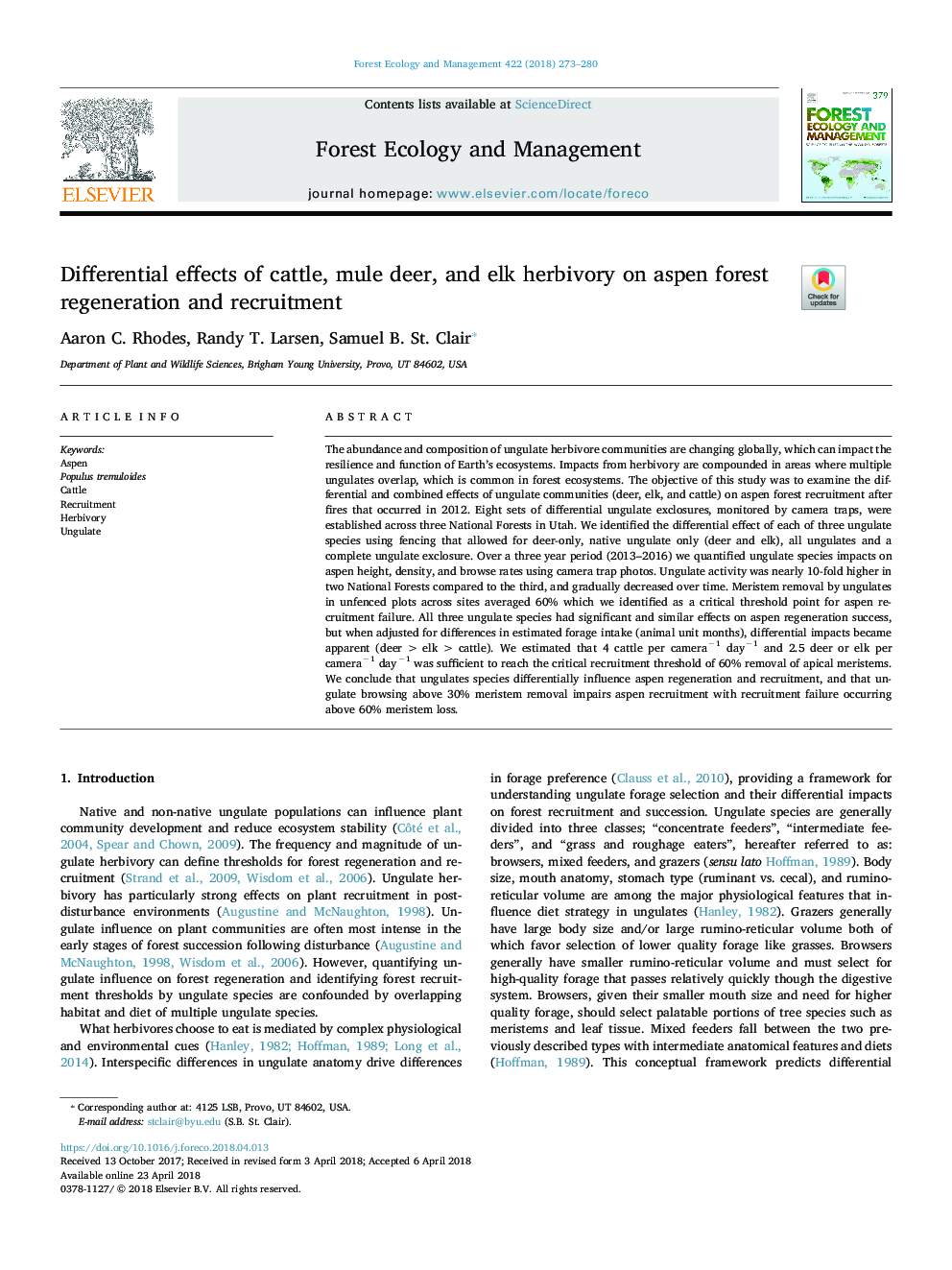| کد مقاله | کد نشریه | سال انتشار | مقاله انگلیسی | نسخه تمام متن |
|---|---|---|---|---|
| 6541673 | 1421338 | 2018 | 8 صفحه PDF | دانلود رایگان |
عنوان انگلیسی مقاله ISI
Differential effects of cattle, mule deer, and elk herbivory on aspen forest regeneration and recruitment
ترجمه فارسی عنوان
اثرات افتراق گاو، گوزن و گیاهان زراعی بر روی بازسازی جنگل های آسپن و استخدام
دانلود مقاله + سفارش ترجمه
دانلود مقاله ISI انگلیسی
رایگان برای ایرانیان
کلمات کلیدی
موضوعات مرتبط
علوم زیستی و بیوفناوری
علوم کشاورزی و بیولوژیک
بوم شناسی، تکامل، رفتار و سامانه شناسی
چکیده انگلیسی
The abundance and composition of ungulate herbivore communities are changing globally, which can impact the resilience and function of Earth's ecosystems. Impacts from herbivory are compounded in areas where multiple ungulates overlap, which is common in forest ecosystems. The objective of this study was to examine the differential and combined effects of ungulate communities (deer, elk, and cattle) on aspen forest recruitment after fires that occurred in 2012. Eight sets of differential ungulate exclosures, monitored by camera traps, were established across three National Forests in Utah. We identified the differential effect of each of three ungulate species using fencing that allowed for deer-only, native ungulate only (deer and elk), all ungulates and a complete ungulate exclosure. Over a three year period (2013-2016) we quantified ungulate species impacts on aspen height, density, and browse rates using camera trap photos. Ungulate activity was nearly 10-fold higher in two National Forests compared to the third, and gradually decreased over time. Meristem removal by ungulates in unfenced plots across sites averaged 60% which we identified as a critical threshold point for aspen recruitment failure. All three ungulate species had significant and similar effects on aspen regeneration success, but when adjusted for differences in estimated forage intake (animal unit months), differential impacts became apparent (deerâ¯>â¯elkâ¯>â¯cattle). We estimated that 4 cattle per cameraâ1 dayâ1 and 2.5 deer or elk per cameraâ1 dayâ1 was sufficient to reach the critical recruitment threshold of 60% removal of apical meristems. We conclude that ungulates species differentially influence aspen regeneration and recruitment, and that ungulate browsing above 30% meristem removal impairs aspen recruitment with recruitment failure occurring above 60% meristem loss.
ناشر
Database: Elsevier - ScienceDirect (ساینس دایرکت)
Journal: Forest Ecology and Management - Volume 422, 15 August 2018, Pages 273-280
Journal: Forest Ecology and Management - Volume 422, 15 August 2018, Pages 273-280
نویسندگان
Aaron C. Rhodes, Randy T. Larsen, Samuel B. St. Clair,
